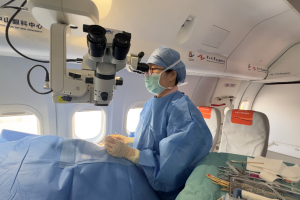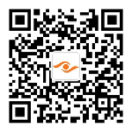
Resource: State Key Laboratory of Ophthalmology
Written by: Jiaqing Zhang, Xiaotong Han
Reviewed by: Yangfa Zeng, Liying Liang
Edited by: Xianjing Wei
Proofread by: Jiawei Wang
The benefits of outdoor physical activities in promoting children’s physical fitness and myopia prevention are widely recognized. In countries with competitive academic systems, parents may hesitate to encourage their children to participate in extracurricular physical activities due to concerns that this may adversely impact academic performance.
Prof. Yizhi Liu and Prof. Yangfa Zeng’s team from the Zhongshan Ophthalmic Center, Sun Yat-Sen university published a research article in JAMA Pediatrics, entitled “Effect of Extracurricular After-School Physical Activities on Academic Performance of Schoolchildren: A Cluster Randomized Clinical Trial”.
The randomized cluster trial was conducted in Yudu, Jiangxi, China between October 2020 and June 2021, with 2032 children from 24 elementary schools (mean [standard deviation, SD] age, 9.22 years [0.62], 1040 girls [51.2%]). The children were randomly assigned to either the intervention group (12 schools, 1012 children) that received 2 hours of physical activity time outdoors on school days after classes, or the control group (12 schools, 1020 children) which was free to choose their after-school activities. The study's main goal was to measure the difference in average mathematics test scores between the two groups at the end of one academic year. The noninferiority margin was set at -3.3 points (Figure 1).
Figure 1. The study design.
At the end of 1 academic year, the intervention group attained a mathematics score (SD) of 78.01 (17.59) points, whereas the control group obtained 77.70 (17.29) points, showing a mean difference of 0.65 points (95% confidence interval [CI], -2.85 to 4.15). The lower limit of the 95% CI for the mean difference exceeded the threshold of -3.3 points, indicating noninferiority. The mean overall physical fitness score at the end of 1 academic year was 81.49 (6.26) points in the intervention group, compared to 76.24 (7.29) points in the control group, with an adjusted mean difference of 4.95 points (95% CI, 3.56 to 6.34, Table 1).
Table 1. Intention-to-Treat Analysis of Changes in Mathematic test and Physical Fitness Scores after 1 Academic Year Between the Intervention and Control groups.
In the intervention group, 58 of 702 children (8.3%) had incident myopia, which was lower compared to the control group (74 of 728 children [10.2%]), though the adjusted mean difference did not reach statistical significance (-1.90%; 95% CI, -18.72% to 14.91%; P > .99; Table 2).
Table 2. Intention-to-Treat Analysis of Changes in Incident Myopia and Relevant Ocular Parameters After 1 Academic Year Between the Intervention and Control Groupsa.
In conclusion, this study proved that adding 2 hours of extracurricular physical activity per day in an after-school setting would not compromise academic performances, providing high-level evidence for the promotion of more outdoor activities in real world.











